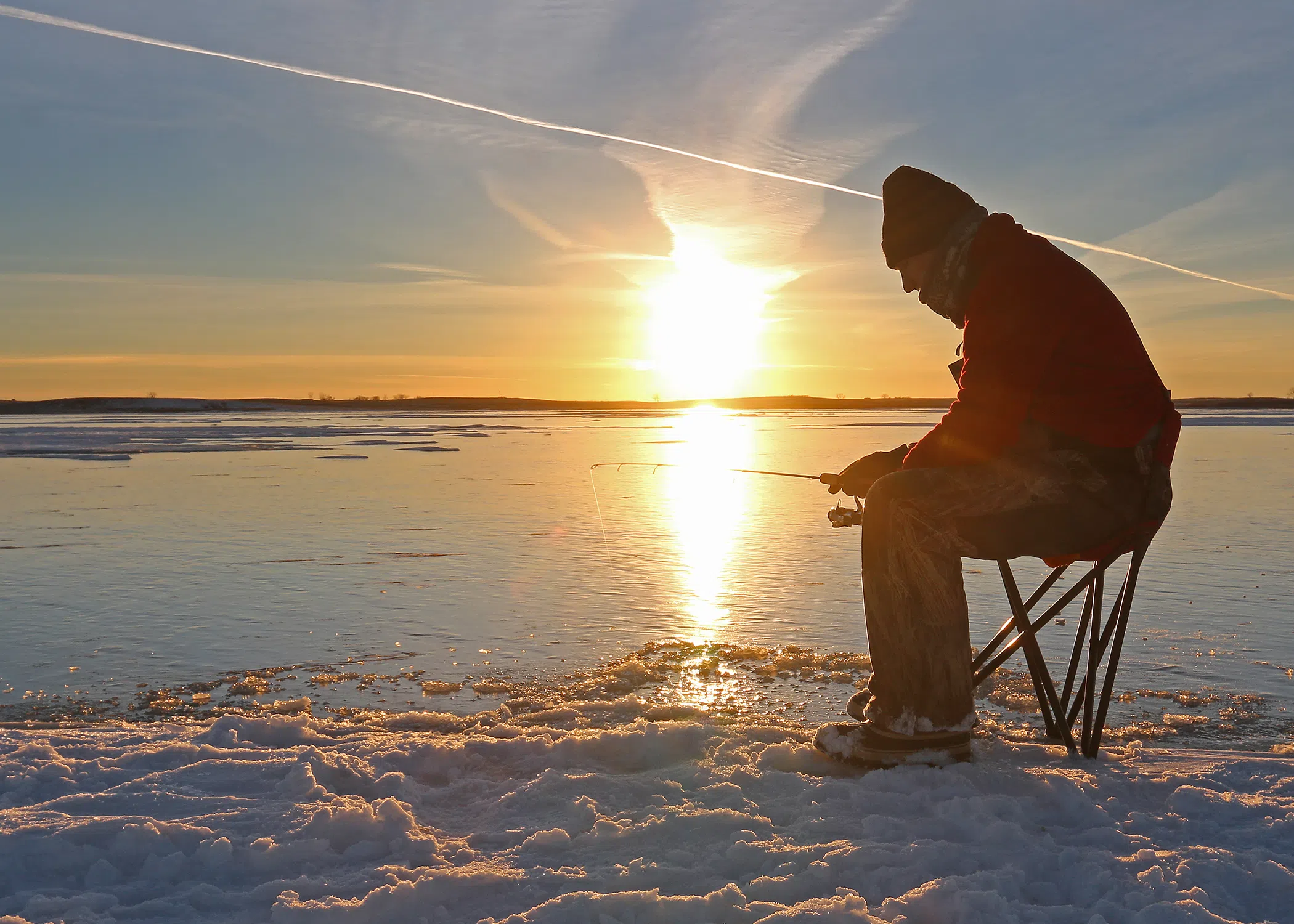
NDGF ice fishing
By Doug Leier
Winterkill of fish in lakes, reservoirs, ponds and sloughs is nothing new in North Dakota. In any given year there’s a potential for winterkill. Just like for pheasants and deer in North Dakota, long, cold, snowy winters exact a toll.
Dead deer and pheasants are easier to spot with a white blanket of snow, but underneath the ice, a fish kill can be a little less conspicuous.
Some obscure sloughs that suffer winterkill may never be noticed. Depending on the severity, the dead and decaying fish may be cleaned up by the natural cycle of gulls, coyotes and scavengers cleaning up after the ice is out.
What causes fish winterkill?
Aquatic vegetation produces dissolved oxygen through the respiration process of photosynthesis, just as land-based plants release oxygen into the air. Fish then process oxygen with their gills.
Of course, sunlight is needed to start the photosynthesis process, and during some winters, the combination of thick ice and snow on top of it prevents sunlight from reaching aquatic plants. At some point, lack of sunlight kills aquatic plants, so they no longer release oxygen into the water.
To compound matters, once plants begin to die-off, not only do they no longer produce oxygen, but they also actually take oxygen out of the water as they decompose. In addition, the day length in December and January is very short thus naturally reducing overall photosynthesis.
If the water’s oxygen content falls low enough, fish start to die. And when that happens, their decomposition also uses oxygen.
How bad can it get?
In any given year a few dozen reports of varying degrees of winterkill are noted. While our fisheries division manages over 450 waters, consider last winter when 100 were on the official “watch list” as Department staff compiled lakes with low levels of dissolved oxygen.
While some of these lakes may not suffer any winterkill, many may suffer some level of winterkill. Winterkill severity may range from a partial kill, where significant numbers of fish died, to a total kill, where all fish died.
Can we prevent it?
Some suggest battling winterkill by clearing snow from the ice. While this sounds good, it’s much easier said than done. Last winter, or any recent snow, makes you realize it’s hard enough to keep your own driveway clear of snow, let alone enough acres of ice to make a difference for even one lake where winterkill is looming. It’s easy to imagine that hours after clearing part of a lake, winds would quickly blow snow into the open space.
With hundreds of lakes to monitor, fisheries managers appreciate reports from ice anglers who observe dead minnows floating up in holes. Once winterkill is suspected, all biologists can really do is go in with nets once the ice goes out to see what’s left and possibly restock.
So, while driving by a picturesque winter scene of snow and ice reflecting the bright sun, it’s easy to see how the deer and pheasants are faring, but in terms of fish, the story is unfolding beneath the snow and ice.




Comments